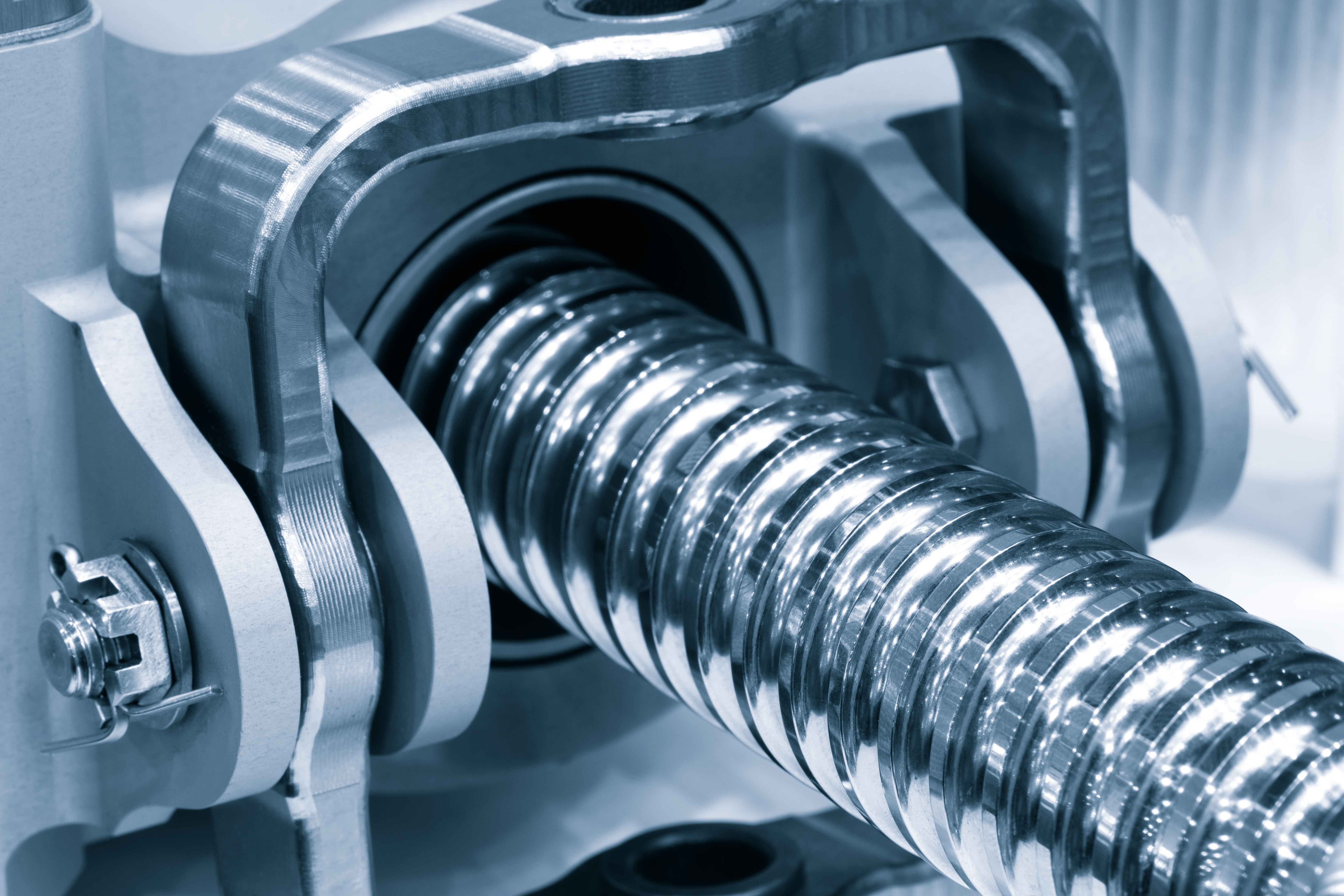
Screw-driven jacks are the most popular devices used to convert the rotary motion of a motor into linear movement. However, there are two common types of screw-driven systems to choose from: ball screws and lead screws. In this blog, we’ll cover the benefits, drawbacks, and applications of both ball and lead screws to help you determine which option is best for your needs.
Ball Screws
Ball screws are well-suited for high-cycle applications requiring continuous motion, and they are better at handling high axial loads compared to lead screws. They operate similarly to recirculating ball bearings in that they utilize the same rolling properties when converting rotary motion into linear movement. The ball rolls inside special grooves cut into helical features of the screw, enabling enhanced precision, less friction, and the ability to handle high-cycle conditions.
Advantages
Ball screws provide several advantages, including:
- Increased Lifespan
- Improved Efficiency
- Less Heat Generation
- Lower Torque Requirements
- Reduced Friction
Disadvantages
Ball screws are suitable for many applications, but there are some disadvantages to consider:
- Lubrication is Required to Maximize Lifespan
- Braking Systems are Required to Prevent Back-Driving
- Can Cause Problems in Vertical Configurations
- More Noise Generation
- More Costly than Lead Screws
Applications
Ball screws are best suited for applications requiring continuous or high-speed movement, precision, accuracy, efficiency, and smooth motion. Common use cases include:
- Precise positioning systems in electric vehicles and automotive steering systems
- Energy generation machinery such as solar panels, wind turbines, and hydroelectric equipment
- Aircraft machinery
- Viewing systems for photolithography processes
Lead Screws
Generally, lead screws are a more cost-effective screw-driven system compared to ball screws; however, they are intended for use in simple positioning applications with low cycles. Lead screws utilize sliding friction and feature machined or injection-molded polymer nuts that travel on the screw. Due to their simple production, lead screws facilitate easy customization and allow designers to efficiently implement them into their projects while maintaining lower costs.
It’s also possible to 3D print lead screws from various materials, giving the lead screws improved tribological properties. Several geometries are available for lead screws, including high-helix shapes, miniature metric threads, ACME, and metric ACME or trapezoidal shapes.
Advantages
Lead screws offer several advantages, including:
- Suitable for Vertical Configurations
- Self-Locking Features Without the Need for a Braking System
- Cost-Effective
Disadvantages
Although lead screws typically come at a lower price point, they come with certain drawbacks, including:
- Reduced Lifespan
- Lower Efficiency
- Low-Speed
- More Heat Generation
- Increased Friction Generation
- Require a Larger Drive and Motor
- Increased Torque Requirements
Applications
Lead screws are often suitable for simple motion transfer applications that require less rigidity, precision, accuracy, and speed. Common use cases include:
- Life Sciences and Laboratory Equipment Such as Scanning and Fluid-Handling Devices
- Engraving Machinery
- Rapid Prototyping Equipment
- Inspection Equipment
- Data Storage
- Heavy Lifting Applications (when combined with a metal nut)
Ball Screw Jacks From Joyce/Dayton Corp.
Despite similarly transferring rotary motion to linear motion, ball screw and lead screw jacks have several differences that make them ideal for unique applications. By understanding the key distinctions between ball and lead screws, you’ll be better able to select the best option for your needs.
At Joyce/Dayton Corp., we are a leading manufacturer of ball screw jacks, lifting equipment, and actuators for customers across North America. Established in 1873, we have extensive experience designing and manufacturing superior-quality products that meet our customers’ requirements. For help deciding which linear motion solution is right for your needs, or to learn more about our capabilities, contact us or request a quote today.
